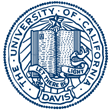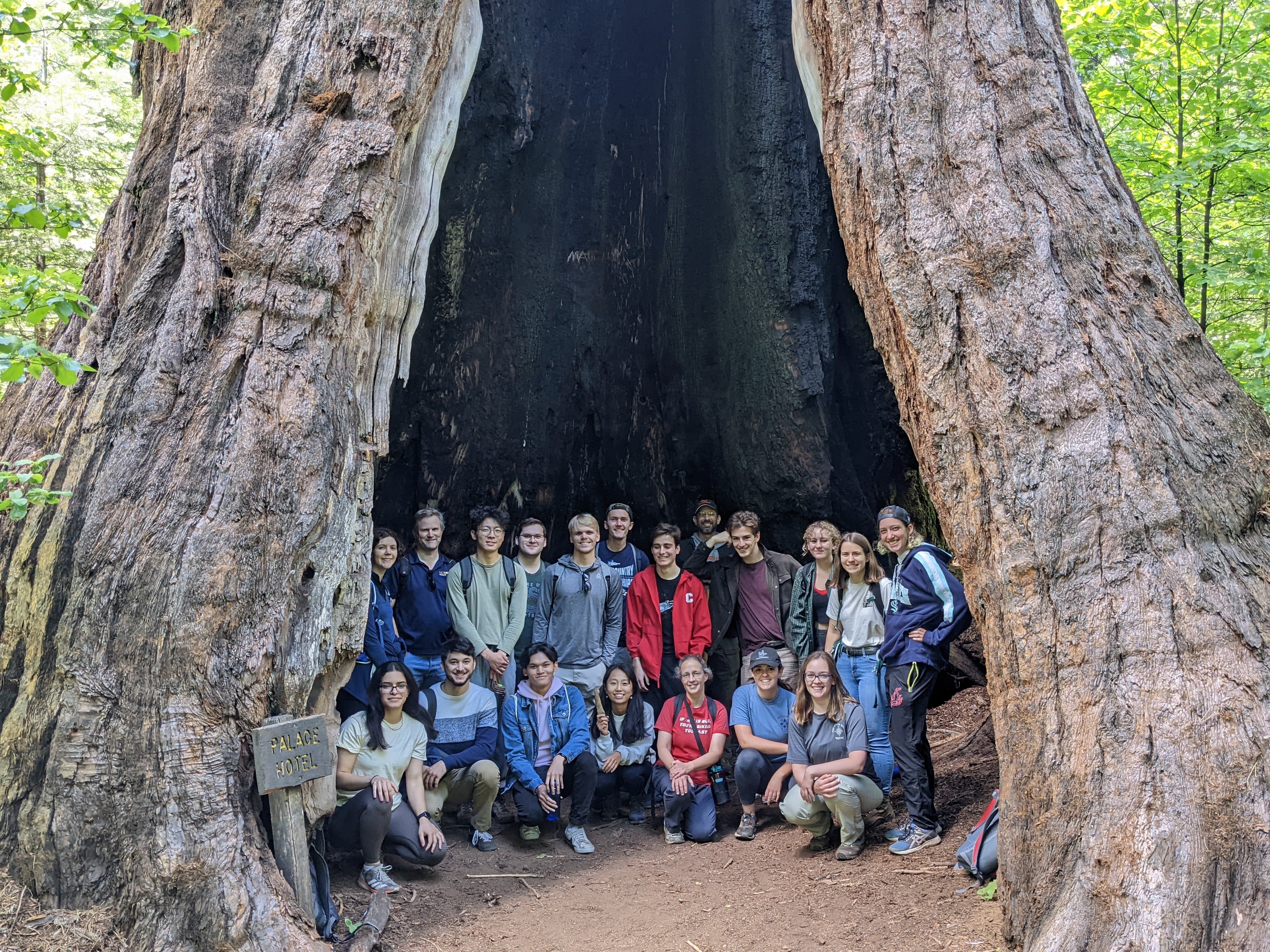
This REU program was funded through NSF PHY-2150515.
Calaveras Big Trees State Park
Our first trip took us east to Calaveras Big Trees State Park to see 1000-year-old giant sequoias. The size of these trees is difficult to comprehend when they are standing; even if you're able to see their top 250 or 300 feet in the air, your brain will have trouble accepting that such a perspective makes sense. Walking by the very long trunk of a fallen tree can give more of a sense of the size. For our group photo everyone was inside the appropriately named "Palace Hotel" tree, with plenty of room to spare. On the right below, three students clambered into the crotch of another tree.


Lick Observatory
This year's trip to Lick Observatory was a great success, with clear and dark skies perfect for viewing. After a picnic dinner, we toured several buildings at the facility, and learned about the history of James Lick and Mt Hamilton. We observed three different celestial objects through the original refractor telescope (57 feet long, with 36 inch diameter lenses, total weight over 12 tons), and learned about how daily operations function for scientists who regularly use the observatory.

The polished wood floor near the large refractor, with students waiting near the edge for their turn to climb the observation ladder (at right). The floor originally raised and lowered through a hydraulic mechanism. As the telescope orientation changes from near vertical to near horizontal, the height of its eyepiece varies dramatically. The movable floor avoided the need for huge ladders. Note the red lighting, which keeps everyone's eyes adjusted to the dark.
McClellan Nuclear Research Center
McClellan Nuclear Research Center, formerly part of an air force base but now managed by UC Davis, is about half an hour by car from the main campus. During our visit, we toured the facility and learned about how neutron radiography can be used as an alternative to x-rays for non-destructive imaging of materials such as critical pieces for engineering. We also were able to visit the nuclear reactor itself, and observed the brilliant blue Cerenkov light at the bottom of the water pit. Unfortunately, no photographs are allowed.
Lassen Volcanic National Park
The Dixie Fire in the summer of 2021 burned through most of Lassen Park, so we had some trepidation of what we would fine there. In fact the worst-hit region, in the southeast, remains closed to visitors. The main park road had been used as a firebreak, resulting in interesting if somber segments where the trees to the east had been burned to a crisp, but those to the west were largely intact.
Even without the fire evidence, Lassen has a huge variety of scenery. We sampled beautiful alpine spots, strange and smelly hydrothermal areas, and rocky but seemingly inert volcanos. Taking advantage of the cooler morning temperatures, we began the second day by climbing the Cinder Cone volcano near our Butte Lake campsite. We then headed to attractions outside Lassen: the Subway Cave lava tube and the spectacular McArthur-Burney Falls, where water emerges in multiple locations from a wall of volcanic rock. The drop in temperature near the foot of the falls was a relief for all on a hot day.

At the foot of McArthur-Burney Falls
Lawrence Livermore National Laboratory
The REU group toured the National Ignition Facility at Lawrence Livermore National Laboratory, learning about the technical challenges to build this instrument that had to be overcome on many levels, from materials science, engineering, and physics perspectives. The group also toured the Advanced Materials Facility, where several state-of-the-art 3D printing technologies are being developed. The tour was a special opportunity in that after being closed to tours for more than two years, Livermore reopened for groups our size just barely before the end of our summer program. Our trip was on Thursday, and the students left Davis within the next two days.